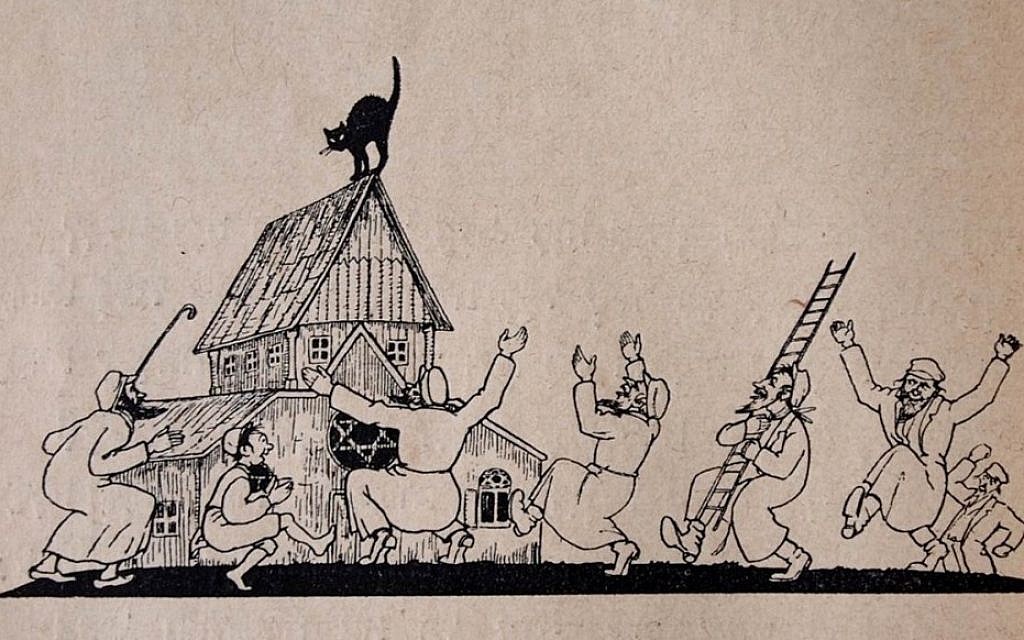DON’T RELY ON ANYONE ELSE

In management training, they tell the apocryphal story of a salesman who walks into his manager’s office one day for a chat.
The sales manager decides to use the meeting as a sales education opportunity and proceeds to educate the salesman on the most effective sales technique.
“The main thing to remember is repetition, repetition, repetition!” he advises him. “If you have a product to sell, keep mentioning it in every possible way, until it feels like you are cramming it down people’s throats and beating them over the head with it!”
“You must repeat and repeat and repeat! It’s the only way to get results!”
“Yes, sir!” the salesman answers.
“Ok, great… and what was it you came to see me about?” the manager asked.
The salesman replies, “A Raise! A Raise! A Raise! A Raise! A Raise! A Raise! A Raise!”
Anyone looking at the final chapters of the Book of Exodus will be struck by the endless repetition.
First there’s the instructions for the Mishkan, then the actual construction of the Mishkan. It is a straight-up copy-and-paste job.
Rashi and the other commentaries on the final two portions are almost non-existent. Whatever they needed to say, they obviously feel they said it the first time around!
But the truth is, this depiction is not quite accurate. While there are limited differences, and the differences are almost imperceptible, those differences that do exist are important and meaningful.
Some years ago, when I was still a rabbi in London, a man from the community I lived in visited me at my office. He was involved in a financial dispute with another Jewish man, and he wanted me to recommend him to a Bet Din to hear the case. I didn’t know the man too well, and was a little surprised he was coming to see me. I asked him which synagogue he belonged to, so he told me. There was a Bet Din (Traditional Jewish Court) associated with that synagogue, so I asked him why he wasn’t going to that Bet Din. The dayan (rabbinic judge) who headed that Bet Din was reputed to be a brilliant scholar, and very experienced.
The man told me that he had considered that Bet Din, but wanted to see it in action first, and had therefore asked to attend a hearing before he committed to have his own dispute adjudicated there. What he had seen convinced him that he would not get a fair result in that setting, which was why he was coming to me.
“What do you mean?” I asked him.
He told me the case he went to see was also a financial dispute and began with one of the parties presenting his side of the story to the three dayanim. After he was done, the second man began presenting his side, but as he was doing so he noticed one of the three rabbis chatting to one of his colleagues.
“Excuse me,” he said, “I’m presenting my side of the story, why aren’t you listening?”
“What for?” the dayan replied, I just heard the story from the other guy…. why do I need to hear it twice??”
We are all acutely conscious of the fact that no two depictions of any scenario are identical. That is the whole point. And if there is any purpose in the repetition of the chapters dealing with the Mishkan at the end of Exodus, it is not in the bits which are the same, it is in the bits which are different.
In the portion of Terumah, after having introduced Moses to the Mishkan, God instructs him regarding the Aron Habrit (Ark of the Covenant): וְעָשׂוּ אֲרוֹן עֲצֵי שִׁטִּים – “and they shall make an Ark of acacia wood.” The Midrash (Shemot Rabba 34:2) makes an interesting observation:
מפני מה בכל הכלים האלה כתיב ועשית ובארון כתיב ועשו ארון
א”ר יהודה ב”ר שלום א”ל הקב”ה יבאו הכל ויעסקו בארון כדי שיזכו כולם לתורה
“Why is it that with all the other [Temple] vessels, the instruction ‘and you shall make’ is written, and with the Ark it says ‘and you shall make the Ark’? Says R. Judah son of R. Shalom, God said to him [Moses], ‘let them all come and involve themselves with the [construction of the] Ark, so that they shall all merit to the Torah.’”
With all the other vessels the instruction was personalized – “Ve’asita” – and you shall make the Menorah, and you shall make the Showbread Table, and you shall make the Altar. But when it came to the Ark of the Covenant, the language was pluralized – “and they shall make”.
The Midrash explains that this was a reflection of its contents – the two sets of Tablets, and later on a fully written Torah scroll – the source of our Judaism, and of our eternity. When constructing the Ark of the Covenant, everyone needed to be involved, not just one individual artisan. Everyone has a stake in the Ark, in the Torah, in making sure it is at the center of Jewish life, and at the forefront of our hearts. You cannot leave that up to someone in a workshop.
That idea translates itself to a community of Torah. A synagogue. Everyone needs to be involved. A synagogue does not belong to one individual, or even to a collection of individuals, each marching on their own. It belongs to all of its stakeholders, united in purpose, in lockstep with each other making sure that the Ark of the Covenant is the sacred center of the community, and we are all together, collectively, bringing the message of Torah to the world, perpetuating it, and strengthening it.
That being the case, one would expect that when the Ark is finally made, and its construction is recorded, the wording would be, “and they made the Ark of the Covenant.” Well, if that’s what you thought, you would be wrong. When we finally reach the chapter that describes the fabrication of the Ark, it says וַיַּעַשׂ בְּצַלְאֵל אֶת הָאָרֹן עֲצֵי שִׁטִּים – “and Bezalel made the Ark of the Covenant out of acacia wood.”
What? Didn’t we just say that this was exactly what God did not want? He had made very clear that He did not want the Ark to be individualized, as it represents Torah, which needs to be a joint effort of all the Jews??
The late Rabbi Baruch Sorotzkin of the Telz Yeshiva in Cleveland proposed the following beautiful interpretation, which I will introduce with the following anecdote.
One year, the community of Chelm announced a wine appeal. Every member was asked to contribute a cup of Kiddush wine for the shul to use for Kiddush and Havdala each week during the following year. A barrel was passed around the community, taken to each member’s house, and each member was asked to pour a cup of wine into the barrel. Or at least, that was the idea.
But each person thought to themselves – there’s a couple of hundred members in our community, so instead of wine I will pour in water – with 199 cups of wine, who’s ever going to know. Eventually, the synagogue got the barrel back, and the first week of the new year arrived. That Friday night, the shammes (beadle) opened the barrel, and discovered that the entire thing was filled with water!
Rabbi Sorotzkin suggests that when it comes to communal efforts, we all rely on the fact that someone else will take care of it. It’s not really me that needs to do anything, we say to ourselves, as it will almost certainly get taken care of by someone else. Someone else will come to minyan. Someone else will attend the shiur. Someone else will host Shabbat guests. Someone else will worry about what needs to get done for the community.
But in the end, all that means is that the barrel is filled with water, not wine. Bezalel knew it had to be everybody who made the Ark, but he devoted himself to making the Aron as if no one else was doing it. And as the lead artisan, he was the example for everyone else to follow, and not the excuse for everyone else NOT to do it.
Everyone devoted themselves to the task as if no one else was involved, giving their every effort and energy for it to be perfect, and in the process creating the most powerful community possible.
Photo: “The Wise Men of Chelm” (photo credit: Illustration from F. Halperin’s ‘Khakhme Khelm,’ Warsaw 1926)



